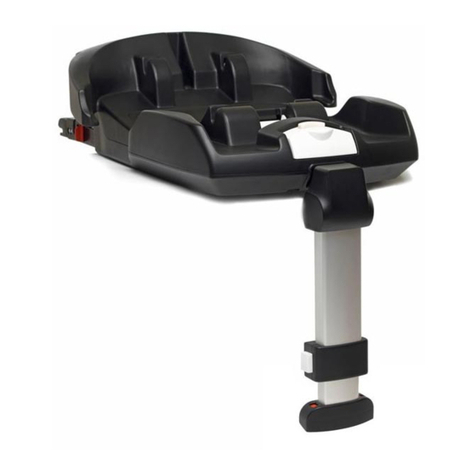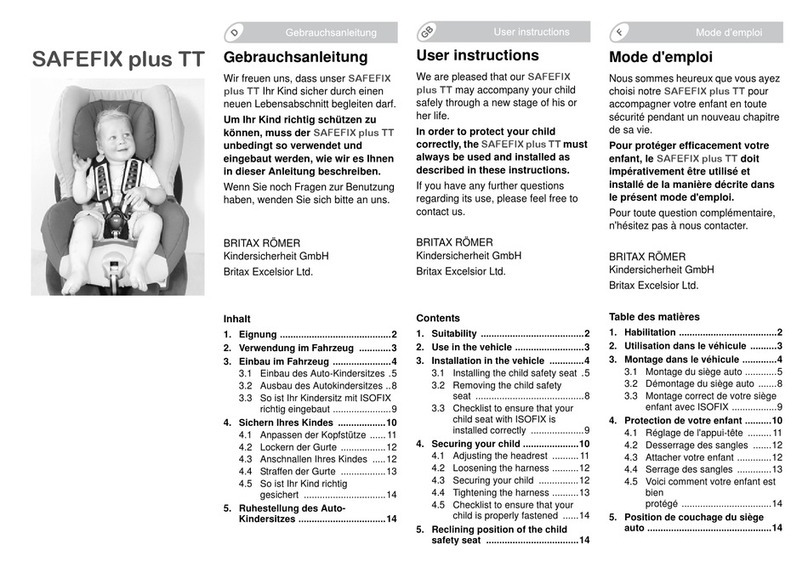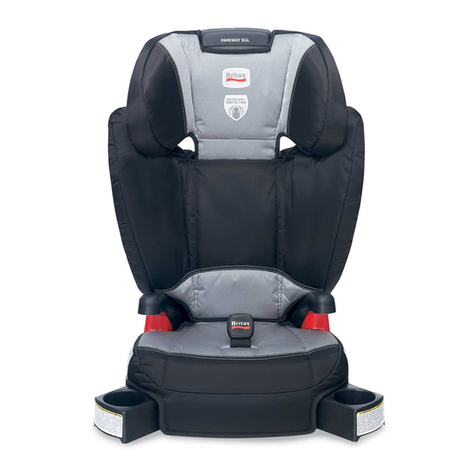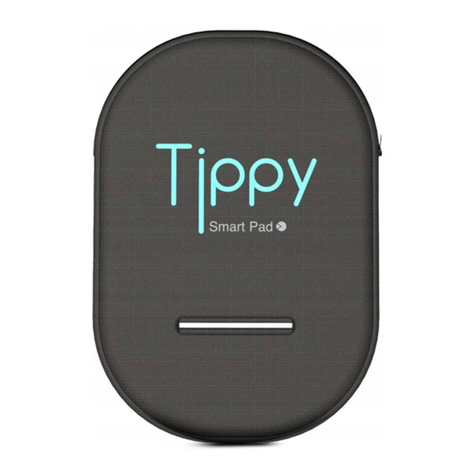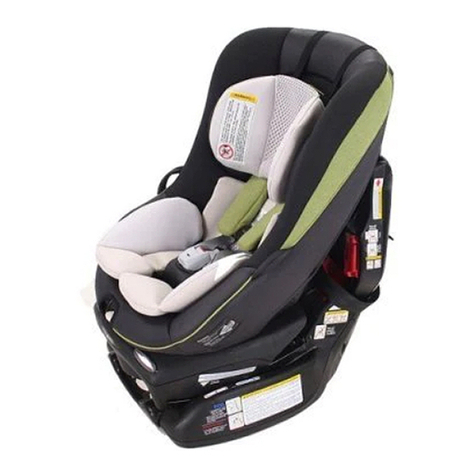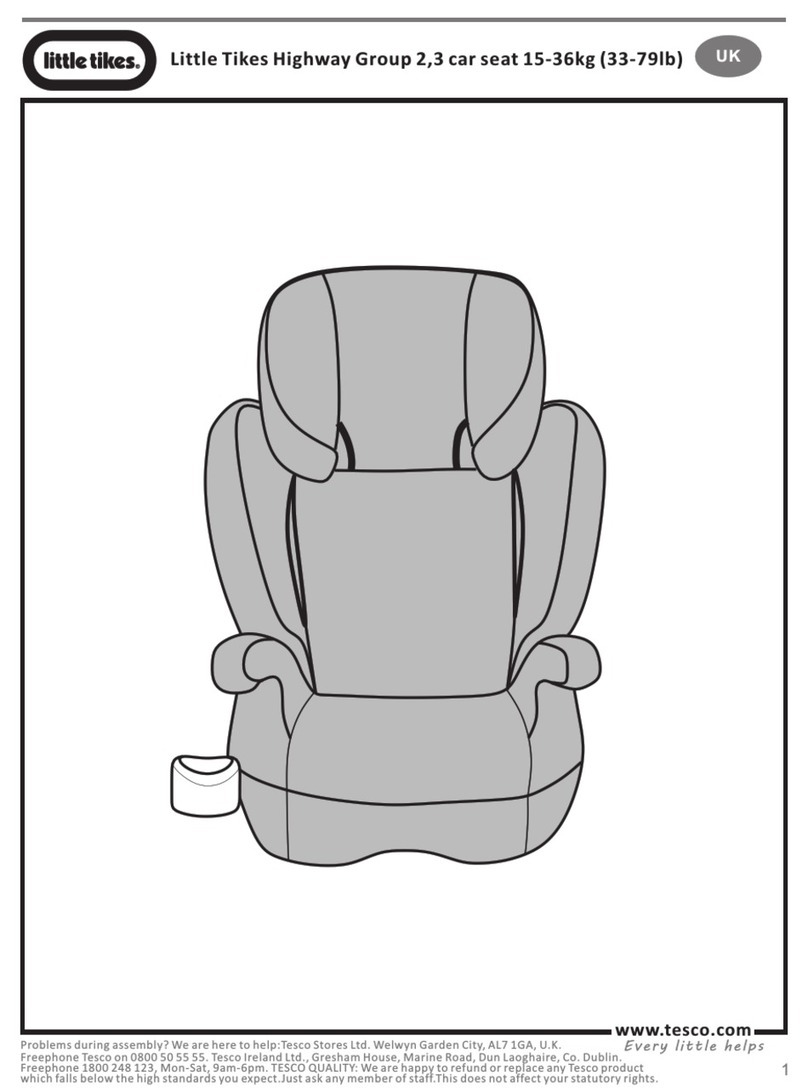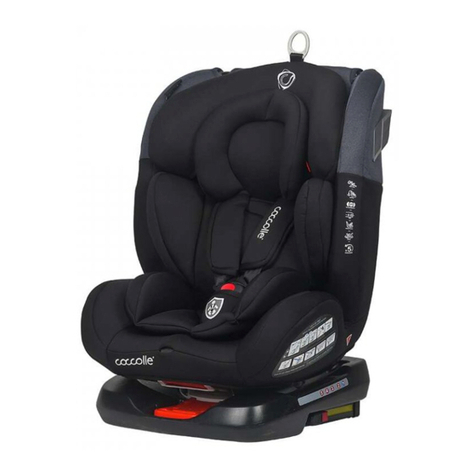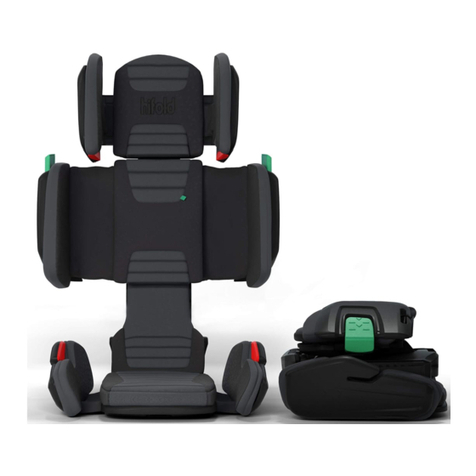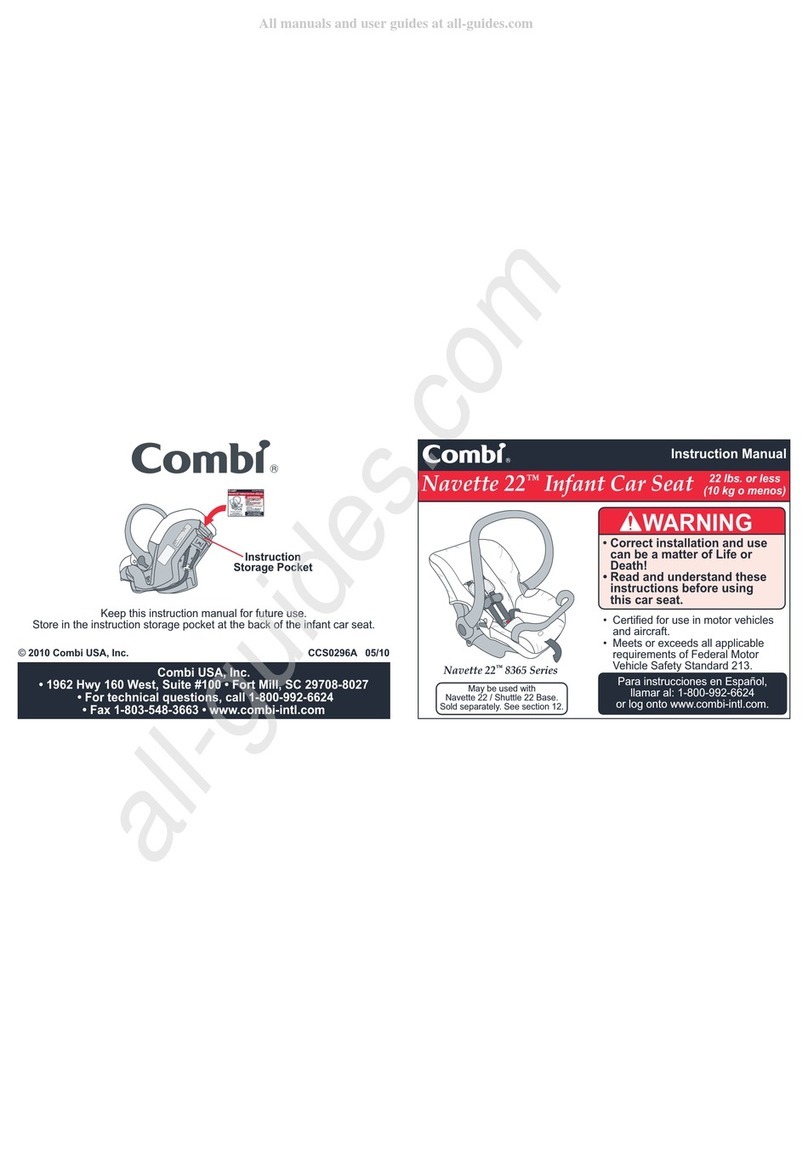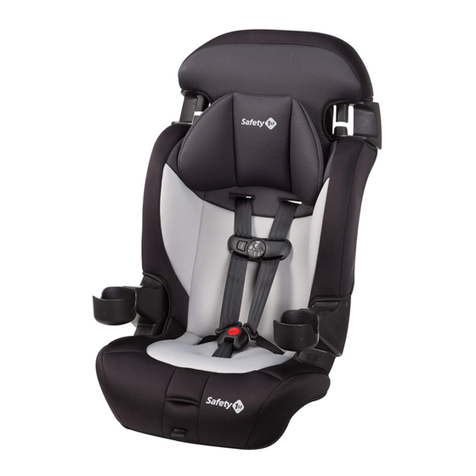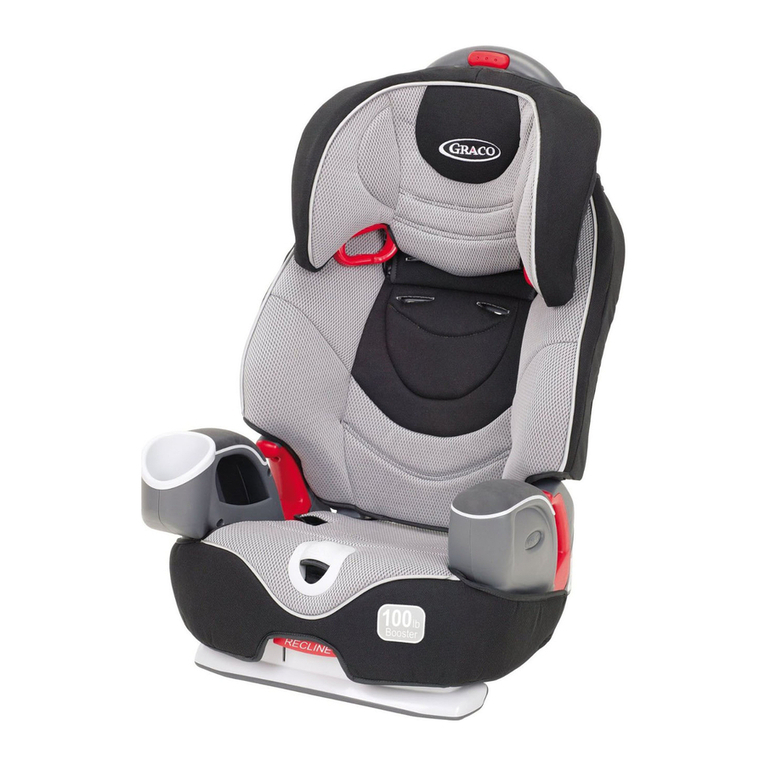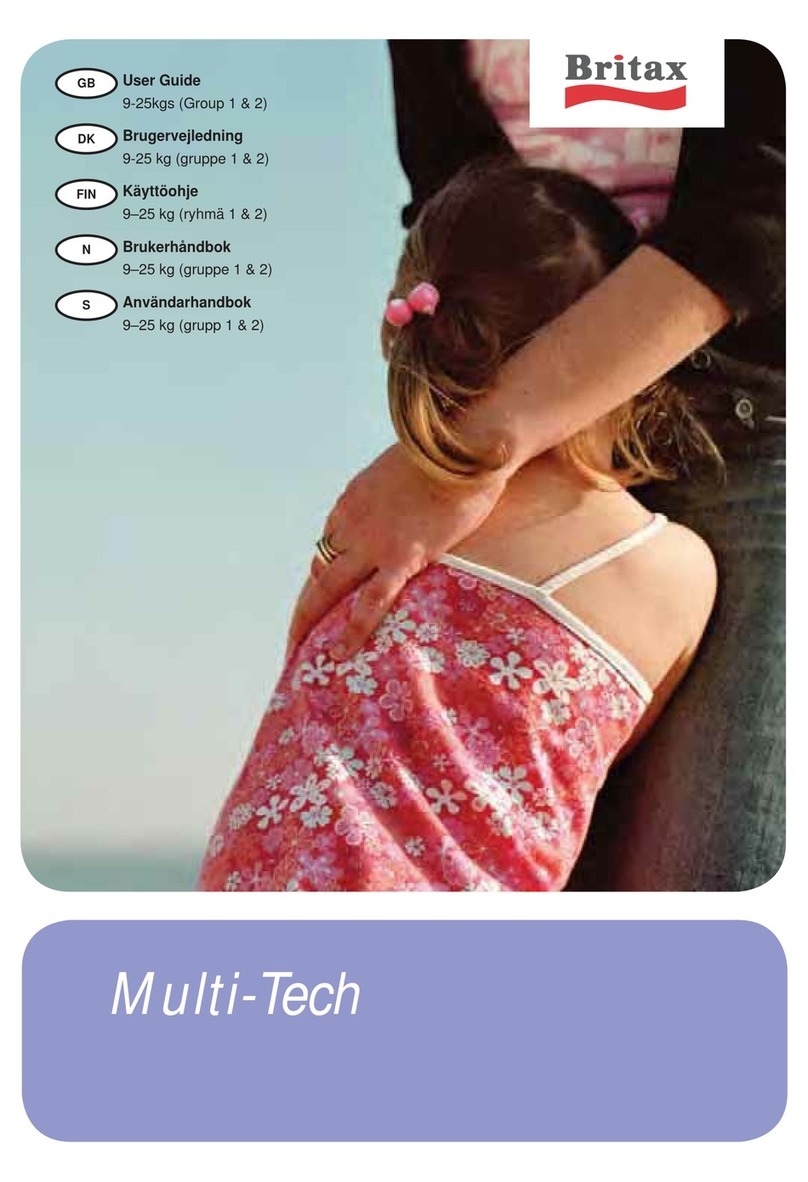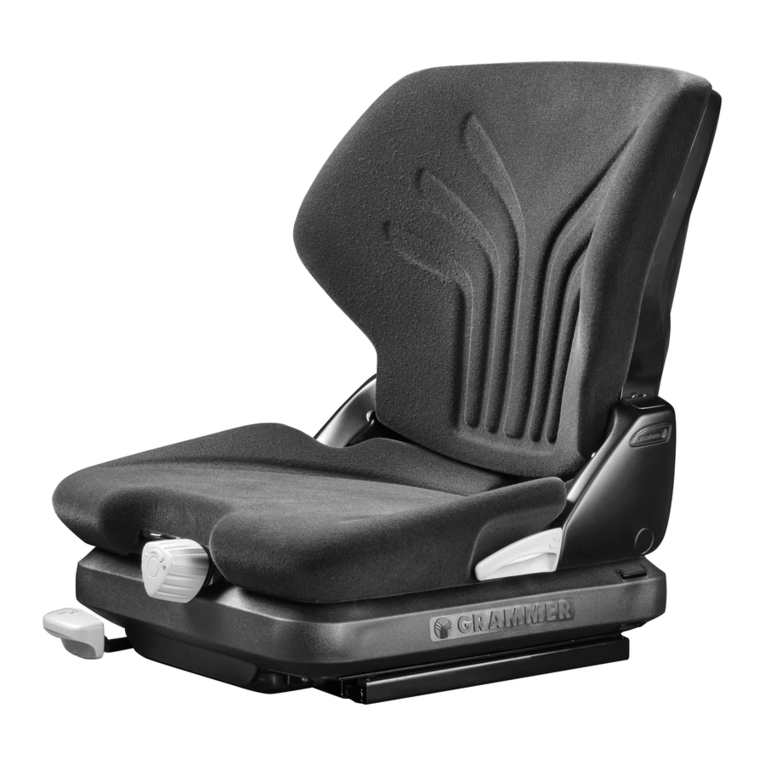My Child Stirling User manual

Stirling Car Seat
Group1,2,3 ISOFIX child car seat
This product conforms to ECE R44.04
Group 1,2,3 child restraint. Suitable for children from 9kg to 36kg (approx 9 months to 12
years old)
Instructions: Please read carefully and keep for future reference. Your child’s safety may
be affected if you do not follow these instructions.
Ce produit répond à la norme ECE R44,04
Siège auto 1,2,3, Convient aux enfants de 9kg à 36kg (d’environ 9mois à 12 ans)
Instructions: A lire attentivement et à garder pour future référence. La sécurité de votre
enfant pourrait être affectée si vous ne respectez pas ces instructions.
V2
En 2-26
Fr 27-51

2
Your 3 year warranty 2
General safety information - READ FIRST 3-7
Welcome 7
Parts checklist 8
Positioning the child restraint 9
Headrest/harness system adjustment 10
Seat recline adjustment 10
Installation group 1 [9-18kg] with ISOFIX + top tether 11-13
Placing a child in the child restraint (group 1 [9-18kg]) 13-15
Removing the harness system 16-18
Installation groups 2-3 [15-36kg] with ISOFIX 19-20
Installation groups 2-3 [15-36kg] with 3-point seatbelt 20-21
Placing a child in the child restraint (groups 2-3 [15-36kg]) 21
Removing and tting the seat covers 22
Retting the harness system 23-26
Maintenance and cleaning 26
Contents
Your 3 year warranty
Whilst we make and test our products to the highest standards of
durability there’s always a small chance of a hiccup! Our promise is
to repair, replace or refund a MyChild product that has an identied
manufacturing defect from the date of purchase for a full 3 years
thereafter at no extra cost.
However, you must register within 28 days of the date of purchase to
receive the full 3 years guarantee!
To receive your full guarantee you can register your product by:
visiting www.mychildonline.co.uk/warranty.html and complete the
warranty form, or by telephone on 0161 335 2508.

3
1. This child restraint system conforms to Regulation ECE-R44/04 for three
different methods of installation.
a) Using an ISOFIX and Top Tether anchor system. The child restraint has
been classied as “Universal” for Group1 (9-18kg), under more stringent
conditions than those that were applied to earlier designs which do not
carry this notice.
b) Using the child restraint with a vehicle’s 3-point seatbelt and without
an ISOFIX anchor system. The child restraint has been classied as
“Universal” for Groups 2 and 3 (15-36kg).
c) Using the optional ISOFIX anchor system, with a vehicle’s 3-point
seatbelt. The child restraint has been classied as “Semi-Universal” and
is compatible for use in vehicles in the “list of approved vehicles” for
Groups 2 and 3 (15-36kg).
2. A correct t is likely if the vehicle manufacturer has declared in the
vehicle hand book that the vehicle is capable of accepting a “Universal”
child restraint for this age group.
3. This child restraint’s UNIVERSAL ISOFIX SYSTEM has been approved
to Regulation ECE-R44/04 for general use in vehicles tted with ISOFIX
anchorage systems. It will t vehicles with positions approved as ISOFIX
positions (as detailed in the vehicle handbook), depending on the
category of the child seat and the xture.
4. The mass group and the ISOFIX size class for which this device is intended
is: ISOFIX size class B1.
5. If in doubt, consult either the child restraint manufacturer or the retailer.
6. Child car seats can mark vehicle seat upholstery. The manufacturer
cannot be held responsible for damage or marking to vehicle seats.
7. The following situations could be illegal and will invalidate the warranty:
a) Any modications or change of use of the child car seat that have
not been authorised or advised by the manufacturer.
b) Any failure to t the child car seat in strict accordance with the
instructions.
The manufacturer accepts no liability for issues arising from unauthorised
modications, uses or tting.
8. Please keep this manual safe for any possible queries you may have in
the future.
9. You will need to keep your proof of purchase. We recommend you keep
them together.
Safety
NOTICES

4
Getting started
Before starting
Warning: Do not t the child restraint on a side or rear facing vehicle
seat.
Warning: Before installing the child restraint ensure that the passenger
seat you are using is locked in the upright position.
Warning: Do not use the child restraint in the home - it has only been
designed to be used in the car.
Warning: Do not leave loose/unsecured objects on the rear passenger
seats of your car or the parcel shelf. They may be dangerous to your
child if you are forced to brake suddenly.
Warning: It is recommended that the child car seat should not be used
more than 5 years from the date of production as the product may
deteriorate due to, for example, ageing of the plastic.
Warning: NEVER leave your child unattended – your child’s safety is your
responsibility.
Warning: The child restraint must be tted in accordance with the
manufacturer’s instructions. Incorrect installation could be dangerous.
Warning: This installation must only be performed by a competent adult.
Don’t try to install the child restraint when intoxicated or drowsy.
Warning: Always ensure that new or occasional users [e.g.
grandparents] have read the instructions or been taught the correct
installation by someone who has read and understood the instructions.
Warning: Always keep this instruction manual with the child restraint, or
in the vehicle in which you are carrying the child restraint. Some models
of child restraint have a pocket to store the instructions.
Read Carefully Before Attempting to Fit the Child Car Seat

5
Warning: Make sure that the child restraint is placed somewhere so that rigid
items and plastic parts do not become trapped in doors or movable seat
units when the seat is in everyday use.
Warning: Always use the vehicle’s door child safety lock system, if one is
available, to make it impossible for the child to open the car doors from
inside.
Warning: Allow the child a break during long car journeys and make sure
they don’t get out of the car unaided and without supervision.
Warning: The child restraint must be tted securely to the passenger seat.
Ensure that it is not loose or wobbly after you have tted it. If it is loose, re-t it.
Warning! Do not use any load bearing contact points other than those
specied in these instructions and marked on the child restraint.
Warning: The child restraint must not be used without its original cover. The
original cover is essential for the safe operation of the child restraint.
Warning: Stop the car at regular intervals to check that the child restraint is
in the correct position and that both the car seatbelt AND the child restraint
harness are still taut and latched.
Warning: In the event of an emergency it is important to be able to release
the child quickly (as dened by ECE Standards). This means that the seat
buckle cannot be fully tamper proof and you should actively discourage
your child from playing with or using the buckle.
Warning: If you travel with passengers using both the front and the rear
passenger seats, the lighter occupants should be in the rear and the heavier
occupants in the front.
Warning: If you have no option other than to put your child restraint on a rear
passenger seat next to side airbags:
- Consult with your vehicle manufacturer for side airbag details. It may not be
safe.
- Make sure your child does not lean into the area immediately around the
airbag.
EXTREME HAZARD
NEVER USE IN FRONT PASSENGER SEATS EQUIPPED WITH AIRBAGS
(SRS)
THIS CAN INCLUDE REAR PASSENGER SEATS THAT ARE EQUIPPED
WITH AIRBAGS*
*Consult car manufacturer for suitability. Children’s bodies are not able
to withstand the forces exerted on them by a deploying air-bag
When using the child restraint
Table of contents
Languages:
Other My Child Car Seat manuals

My Child
My Child Rapido Fix Car Seat User manual
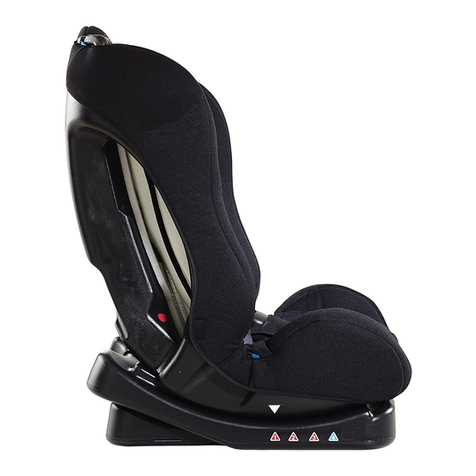
My Child
My Child Chilton User manual

My Child
My Child Jet Stream User manual
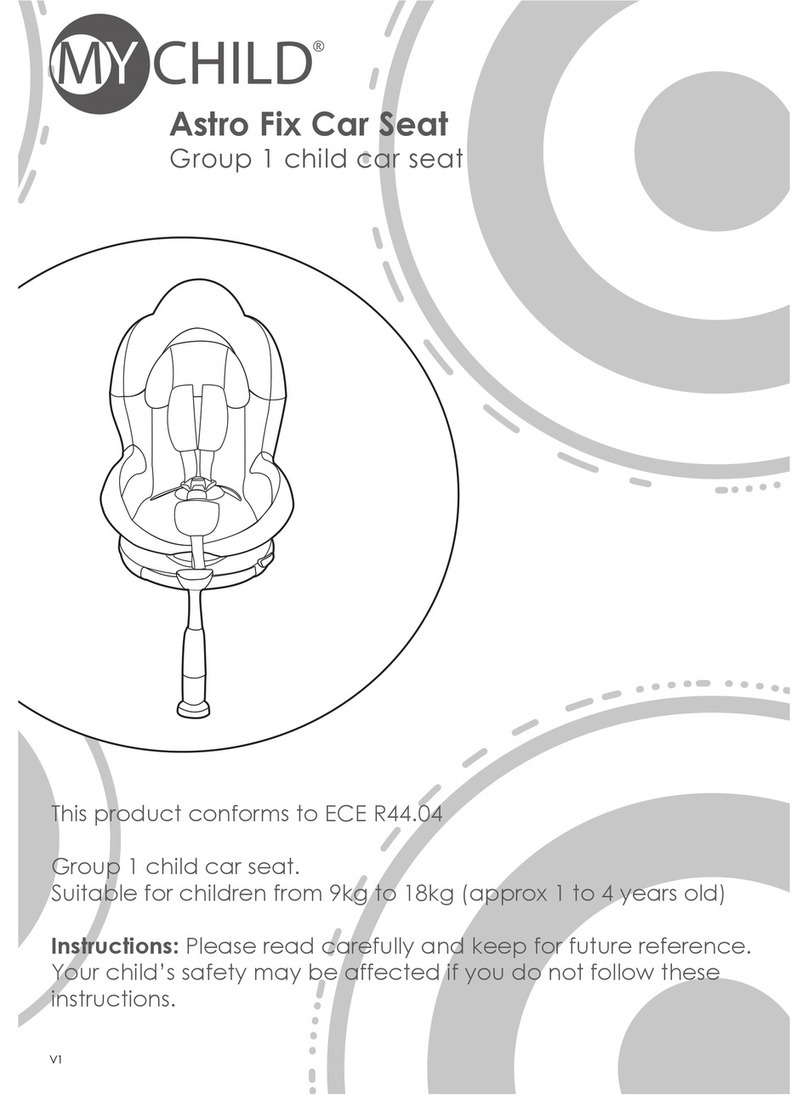
My Child
My Child Astro User manual
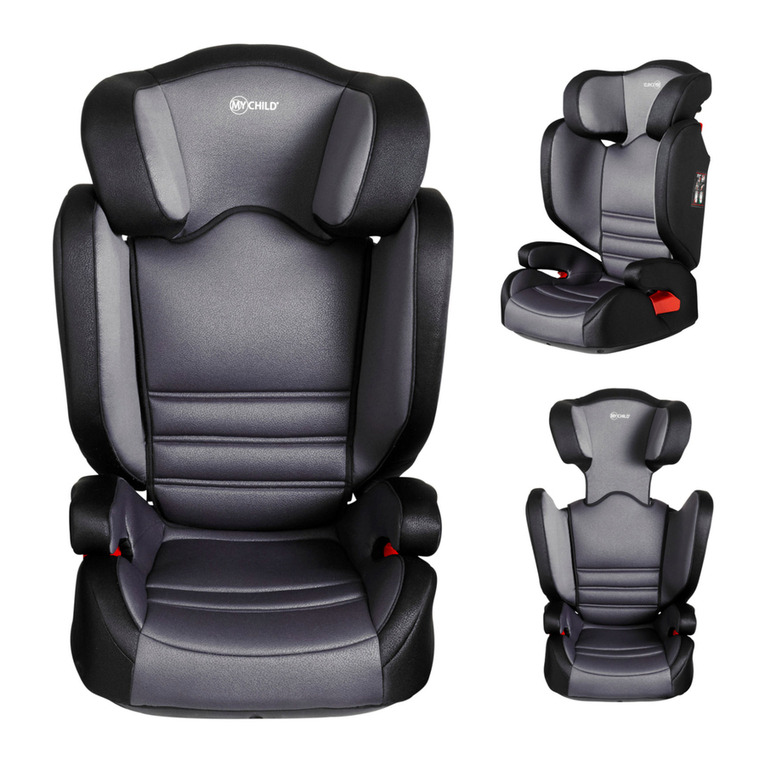
My Child
My Child Expanda User manual

My Child
My Child Easy Twin User manual
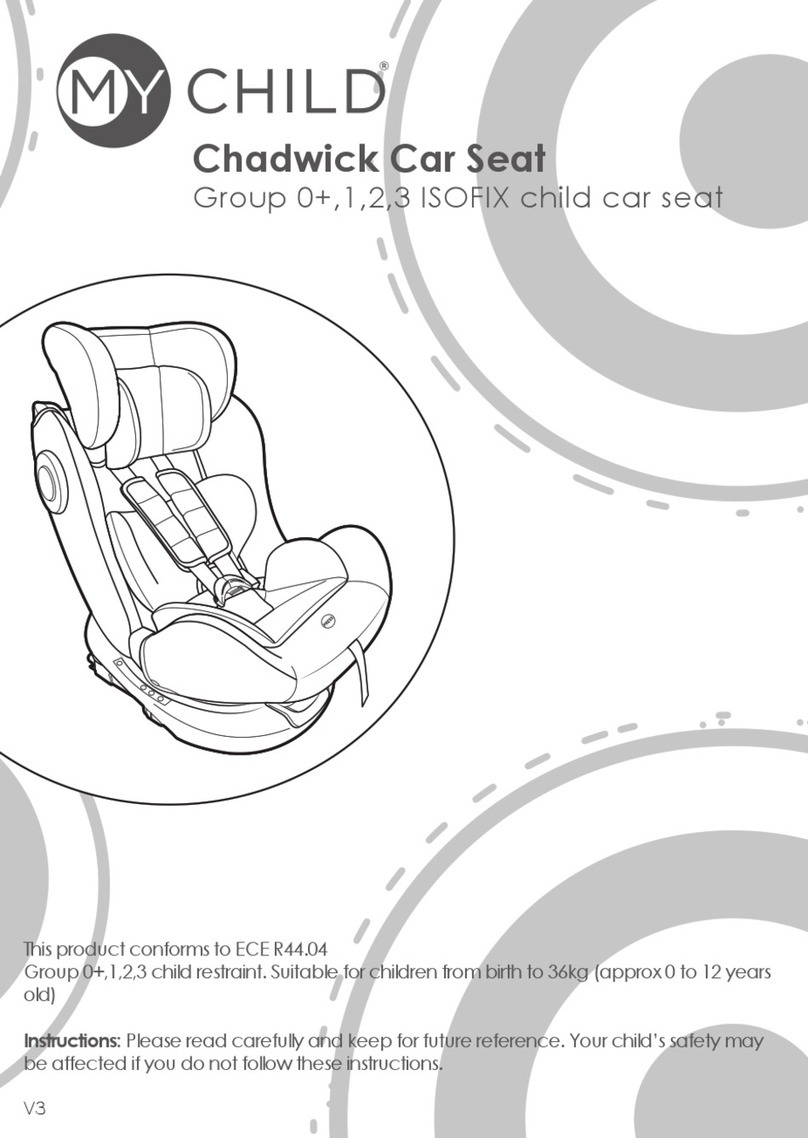
My Child
My Child Chadwick User manual
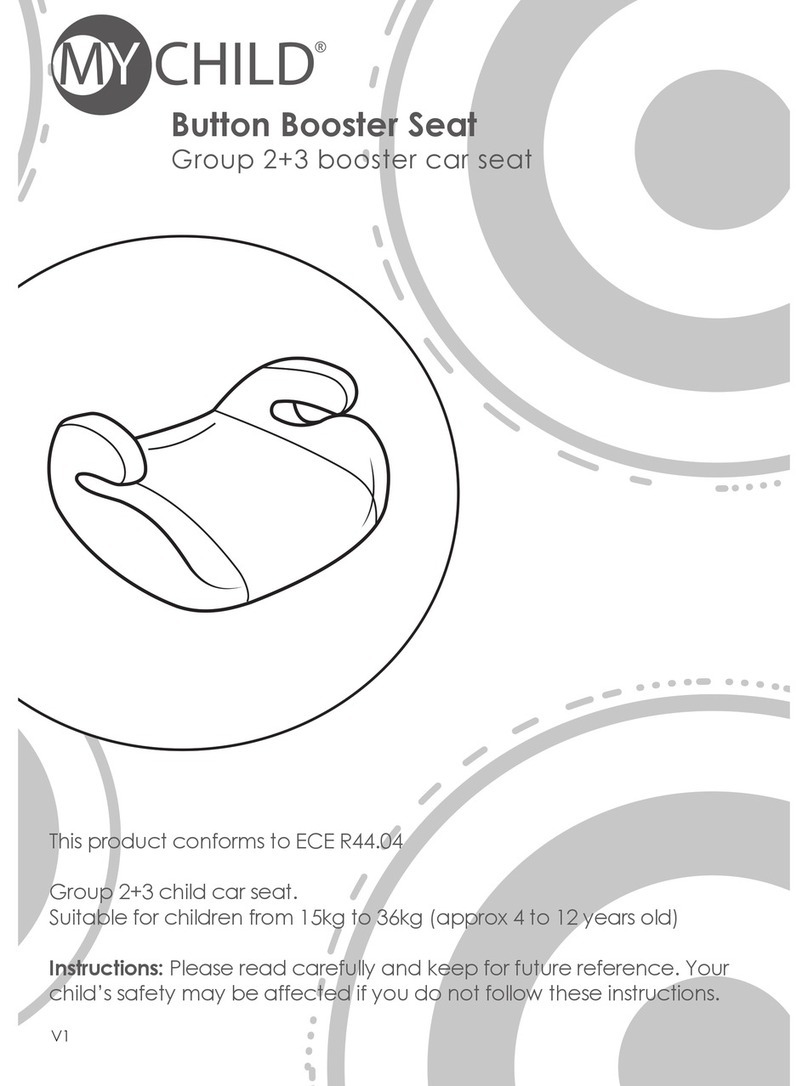
My Child
My Child Button Booster Seat User manual
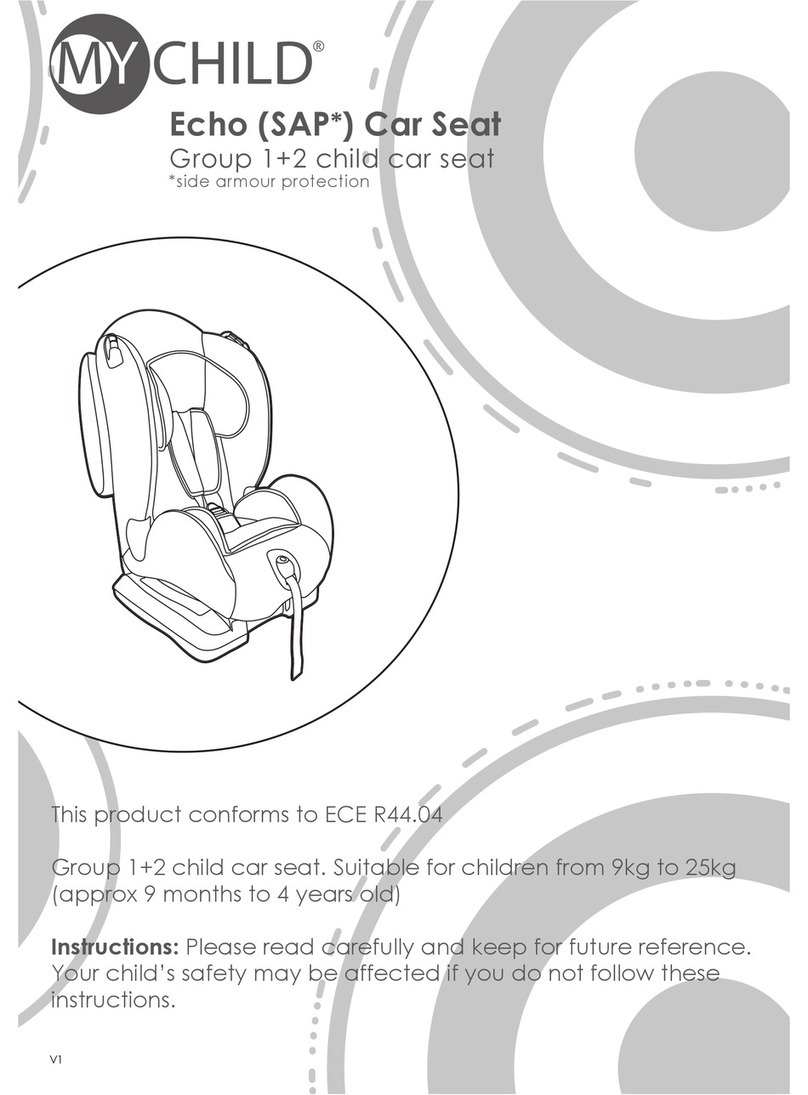
My Child
My Child Echo (SAP) User manual
